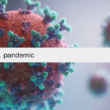
Heart disease remains a leading cause of death globally, making its prevention a critical aspect of public health. This comprehensive guide delves into various strategies and lifestyle changes that can significantly reduce the risk of developing heart disease.
Understanding Heart Disease
Heart disease encompasses a range of cardiovascular conditions, including coronary heart disease, coronary artery disease, and conditions leading to heart attacks and strokes. It’s primarily caused by atherosclerosis, where plaque builds up in the arteries, leading to reduced blood flow.
Risk Factors
Several risk factors contribute to heart disease, including high blood pressure, high cholesterol, smoking, obesity, diabetes, and a sedentary lifestyle. Genetics also play a role, as do age and family history.
Prevention Strategies
- Healthy Eating: A heart-healthy diet is rich in fruits, vegetables, whole grains, and lean proteins. It’s crucial to limit saturated fats, trans fats, sodium, and added sugars. The American Heart Association offers valuable resources on diet for heart health.
- Regular Exercise: Physical activity helps control weight, reduces blood pressure and cholesterol levels, and improves overall heart health. Aim for at least 150 minutes of moderate exercise or 75 minutes of vigorous exercise per week.
- Weight Management: Obesity significantly increases the risk of heart disease. Maintaining a healthy weight through diet and exercise is essential.
- Controlling Blood Pressure: High blood pressure is a major risk factor for heart disease and stroke. Regular monitoring, lifestyle changes, and medication (if necessary) can help control it.
- Managing Cholesterol Levels: High levels of bad cholesterol (LDL) can lead to plaque buildup in arteries. Diet, exercise, and sometimes medication are key to managing cholesterol levels.
- Quitting Smoking: Smoking is a significant risk factor for heart disease. Quitting smoking can drastically reduce this risk.
- Limiting Alcohol Intake: Excessive alcohol consumption can raise blood pressure and add extra calories, which may lead to weight gain.
The Role of Health Organizations
Organizations like the Centers for Disease Control and Prevention (CDC) and the American Heart Association provide extensive information and support for heart disease prevention. Their websites (cdc.gov and heart.org) are excellent resources for learning more about heart health.
Understanding Symptoms and Early Action
Recognizing the early signs and symptoms of heart disease is crucial for prompt and effective treatment. Early detection can not only save lives but also prevent the progression of the disease. Let’s delve deeper into this crucial aspect of heart disease prevention.
Recognizing Key Symptoms
The symptoms of heart disease can vary, but there are key signs to watch for:
- Chest Pain or Discomfort: Often described as a feeling of pressure, tightness, or squeezing in the chest. This is the most common sign of heart disease.
- Shortness of Breath: Difficulty in breathing or feeling winded, which may occur during rest or physical activity.
- Fatigue: Unusual tiredness or feeling overly fatigued, even with minimal exertion.
- Palpitations: Irregular heartbeats or a feeling of “flip-flopping” in the chest.
- Swelling: Edema or swelling in the feet, ankles, legs, or abdomen, often a sign of heart failure.
- Pain in Other Areas: Pain or discomfort in one or both arms, the back, neck, jaw, or stomach.
Silent Symptoms
It’s important to note that symptoms can be silent or less noticeable, especially in women and older adults. They might experience shortness of breath, fatigue, and nausea rather than the classic chest pain.
Importance of Early Action
Taking immediate action upon noticing these symptoms is vital:
- Seek Medical Attention: If you or someone else experiences these symptoms, especially chest pain, shortness of breath, or fainting, seek emergency medical care immediately.
- Early Diagnosis: Early diagnosis can lead to more effective treatment. This might involve medication, lifestyle changes, or more advanced medical procedures.
Regular Health Check-Ups
Regular check-ups are important, even without symptoms, to screen for risk factors like high blood pressure, high cholesterol, and diabetes. These factors can silently contribute to heart disease development.
Understanding Risk Factors
Being aware of personal risk factors, like family history of heart disease, smoking, obesity, and a sedentary lifestyle, is also part of early action. It’s essential to manage these risk factors proactively.
The Role of Awareness and Education
Awareness and education about heart disease symptoms and the importance of early action can lead to better outcomes. Public health campaigns and resources from organizations like the American Heart Association and the CDC are instrumental in this.
The Bigger Picture: Heart Disease in the United States
Heart disease is a significant public health issue in the United States. Efforts from the government and health organizations aim at increasing awareness and providing resources for prevention.
The Importance of Mental Health in Heart Disease Prevention
Mental health significantly impacts heart health. Stress, depression, and anxiety can increase heart disease risks. Managing mental health through stress reduction techniques, therapy, and mindfulness can contribute to overall heart health.
The Power of Community and Support
Having a supportive community and engaging in group health activities can enhance motivation and effectiveness in preventing heart disease. Community programs, support groups, and family involvement are crucial in maintaining a heart-healthy lifestyle.
Conclusion
Preventing heart disease is about making informed choices and adopting a healthy lifestyle. Regular check-ups, being aware of the risk factors, and making proactive changes in diet and lifestyle are key. Additionally, learning from reliable sources like the CDC and the American Heart Association is crucial in staying informed and heart-healthy.
Takeaway
Heart disease prevention is not just about avoiding illness; it’s about improving the overall quality of life. By understanding the causes, acknowledging the risk factors, and taking control of our health, we can significantly lower the risk of heart disease and lead fuller, healthier lives. Remember, prevention is always better than cure.



